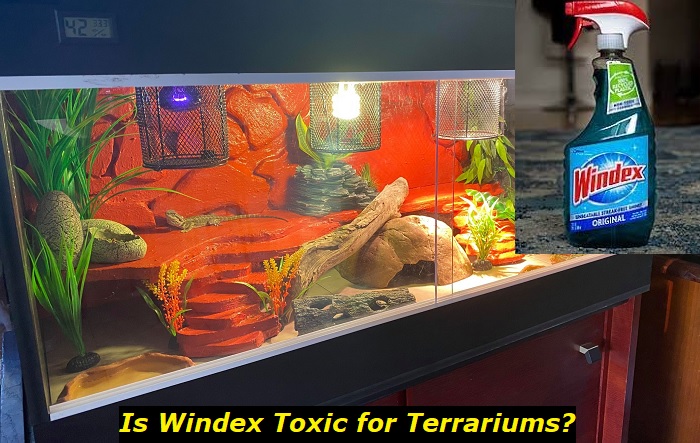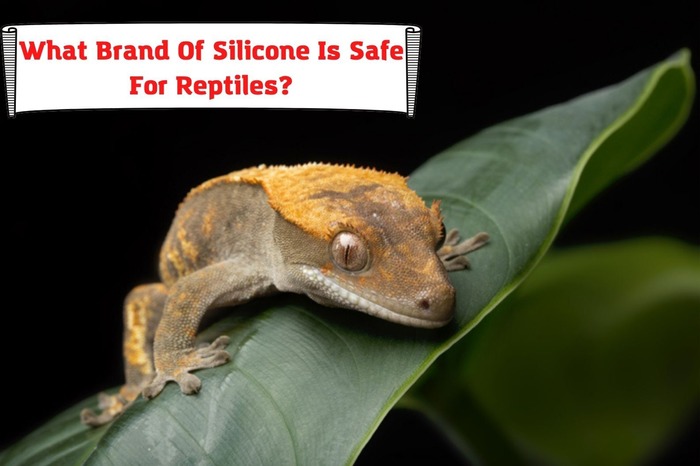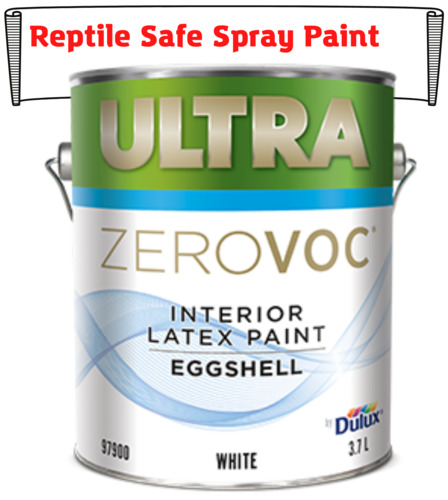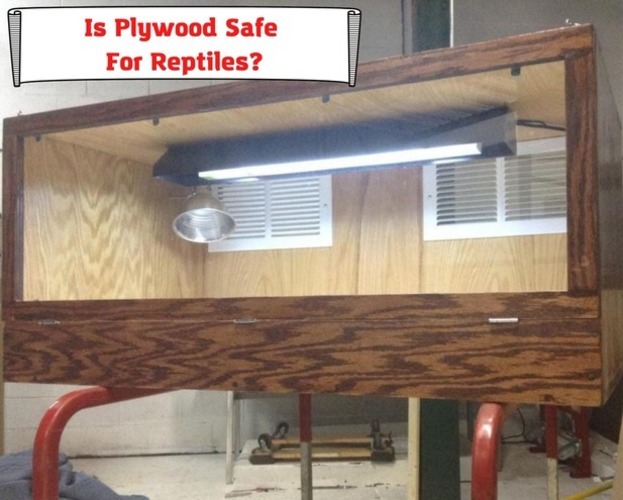Whenever we bring pets into our homes, it is expected that we will go the extra mile to ensure they are as comfortable as possible. This includes creating an environment that recreates their natural habitat as closely as possible. The last thing anyone would want to do is accidentally poison their pet with household cleaning products like Windex.
Once you have a pet that is comfortable, your job shifts to maintaining a clean and optimal environment for it to thrive. Maintaining a terrarium at peak cleanliness is not as easy as one would like to think. You need to create a schedule of how often to clean and ensure you use the right cleaning materials. Though Windex is famous for gleaming even the dullest of glass surfaces, it is not ideal for terrarium glass.

This brings us to the main question of the day, is Windex toxic for your pets? We won’t stop there. Read on to learn more about:
- Why Windex should not be an option when cleaning terrariums
- Your options when searching for safe terrarium cleaning agents
- Which chemicals to avoid when shopping for terrarium cleaners
- Homemade terrarium cleaning solutions.
- The best commercial terrarium cleaner
Windex is Best Avoided When Cleaning Pet Terrariums
Windex is much less toxic than concentrated household cleaners like drain or toilet bowl cleaners. Unfortunately, that is not saying much because these concentrated cleaners are capable of inflicting horrific chemical burns.
Though Windex will not burn your pet, you should know that the Environmental Working Group grades Windex a solid D for its overall healthiness. Not exactly a ringing endorsement, especially if you consider that the product is designed to be used on glass in airy rooms, not confined terrariums.
Windex earned its D grade due to the use of ammonia in its formula. Health-conscious shoppers avoid ammonia-laced detergents because they are known to cause skin allergies and respiratory infections and increase the toxicity of the environment clean with the products. The EWG flagged it as containing ingredients (meaning more than just ammonia) with the capability to cause acute aquatic toxicity.
When you clean using products that have liquid ammonia, the chemical turns into ammonia gas the minute you expose it to air. People who are exposed to large amounts of ammonia gas when cleaning suffer coughing, shortness of breath, wheezing, and general irritation of their respiratory tracts. They also feel a burning in their eyes. Yikes!
If you make the mistake of mixing an ammonia-laden product like Windex with bleach, you will create a toxic chloramine gas. The traces of these products are bound to linger in the terrarium and take a gradual yet significant toll on your pet. It is best to look for alternatives that pose less of a threat to you and your pet.
Your Terrarium Cleaning Agent Options Include:
Homemade terrarium cleaning solutions are cheaper and often just as effective as commercial alternatives. Eco-friendly cleaners are often plant or mineral based and promise no side effects. They are also packaged in easily recyclable or compostable materials that will not end up in a landfill. We will walk you through all your options and leave you to select the most suitable for your circumstances.
You should never consider cleaners that are designed for general household cleaning, like Windex, as suitable for cleaning your pet’s habitat. Their safety standards are designed with regard to larger beings like ourselves. The negligible amounts of toxins in these products could be deadly doses for your much smaller pet.
Chemicals to Avoid When Shopping for Terrarium Cleaners
1. Ammonia
We have already mentioned that the ammonia present in Windex poses a serious aquatic toxicity concern. People are also advised against using cleaning products that use ammonia because, eventually, they will take a toll on the respiratory system. Look out for ammonium hydroxide on the ingredient list, and put down the product if it is present.
2. Bleach/Chlorine
Any product that contains the slightest traces of sodium hypochlorite is not fit for use when cleaning your terrarium. They cause severe skin irritation that could cause sores or open wounds.
3. Formaldehyde
You need to look out for formaldehyde because its by-products and precursors can appear on your product labels under various names. These include formalin, methanal, formic aldehyde, quaternion-15, and methylene.
4. Phenol
Phenol is another toxic ingredient that masquerades under various names. These include carbolic acid, Bakelite, Benzenol, phenolic acid, butylated hydroxytoluene, and alkylphenols.
5. Isopropyl Alcohol
Products that contain Isopropyl alcohol, commonly called rubbing alcohol, should not use in terrariums because of the skin irritation they are likely to cause your pets.
6. Scented Cleaning Products
Considering you have no clue which scents your pet would consider pleasant, it is best to steer clear of scented products. Fragrances and the chemicals used to create them often irritate pets.
Commercial Terrarium/Reptile Cleaning Solutions
Unfortunately, you are not done learning about chemical compounds for the day. Most cleaning agents that are marketed as safe for terrariums contain chlorhexidine as the major disinfecting ingredient. You do not need to be Walter White to figure out that chlorhexidine contains chorine, which is on the hit list above.
While chlorhexidine is not as harsh as bleach and chlorine, it is still capable of causing skin irritation. Why risk it? If you have to put on gloves while handling a cleaning product, it is safe o assume that is not the best alternative for your pet’s terrarium. We advise against using products that contain chlorhexidine, but that would leave you with pretty limited options.
Homemade Terrarium Cleaning Solution
If the list of chemicals has freaked you out, or you would simply prefer to avoid having a laundry list of chemicals to watch out for whenever you go shopping, homemade may be the way to go. A 1:1 solution of water and vinegar cleans out the dirt quite effectively. All you need to do is spray on the solution, allow it to sit for a short while, and rub out the dirt.
The only downside to the homemade fix is the lack of strong disinfecting capabilities. Luckily this is solved by yet another home cure, wiping down the terrarium with hot water. It not only disinfects the terrarium but also rinses out any traces of vinegar that may linger after your final rinse.
OxyFresh Terrarium Cleaner
OxyFresh Terrarium Cleaner costs much more than its competitors and for a good reason. Many insect, reptile, and amphibian owners swear by this product. It reportedly makes terrarium cleaning so easy that you can forget about scrubbing away at the stubborn stuck-on gunk. This magic product is sprayed onto the surface, and when your rub at it a few minutes later, the dirt just peels off.
As if that was not impressive enough, Oxyfresh uses proprietary non-toxic Oxygene® technology to ensure the terrarium is odor free. Unlike other products that attempt to cover up the smell using toxic chemicals, Oxyfresh has a different approach. Their technology neutralizes odors and bacteria in the terrarium.
This product is so safe that you do not need to rinse it out, spray on, wipe and walk away with a terrarium that is clean and toxin-free.
Tips for Cleaning Terrariums
If you stay ahead of the mess, cleaning up becomes less taxing. You will also not need harsh chemicals to remove stuck dirt if you stick to a regular cleaning routine. The more you clean, the less you have to clean. Your pet’s terrarium needs constant cleaning. Allowing dirt and poop to pile up will create a nasty odor that will likely stress out your pet.
A daily touch-up and monthly deep cleaning ought to keep your pet’s terrarium clean enough to eat off.
1) Daily Terrarium Cleaning
Daily cleaning is quick and easy. It involves removing urate, poop, dirty substrate, shed skin, and food leftover from the terrarium. You do not have to remove your pet from the terrarium during this cleaning unless they get in the way. When done removing the dirt, clean the water bowl with hot water and a hard-bristled brush before refilling and replacing it.
2) Monthly Terrarium Cleaning
A monthly cleaning will require relocating your snake to a temporary habitat. A storage box with air holes works fine. You can postpone or move up this cleaning depending on your substrate and how messy your pet is.
All terrarium accessories must be removed and cleaned separately. Do not wet any wooden branches or decor items because they will take forever to dry. Consider baking them in the oven to disinfect them.
Next, unplug the electrical devices connected to the terrarium and remove the substrate. Use your cleaner of choice to reach every part of the terrarium and allow it dry. Once it dries, plug in the electrical devices and return your pet to its squeaky-clean terrarium.
You can now turn your attention to the accessories you removed. Clean them in a bathtub or utility sink and leave them to dry. Wash your hands and wait to return the accessories to the terrarium as they dry.
In conclusion, using Windex to clean your pet’s terrarium is far from ideal. Commercial reptile cleaners, homemade solutions, and Oxyfresh are more suitable for terrariums.
- Pacman Frog Looks Deflated – What’s Wrong and What to Do? - August 7, 2023
- How to Put Snake Back in Cage after Feeding? Important Concerns - July 31, 2023
- Repta Boost: Instruction, Considerations, Ways to Use - July 24, 2023



